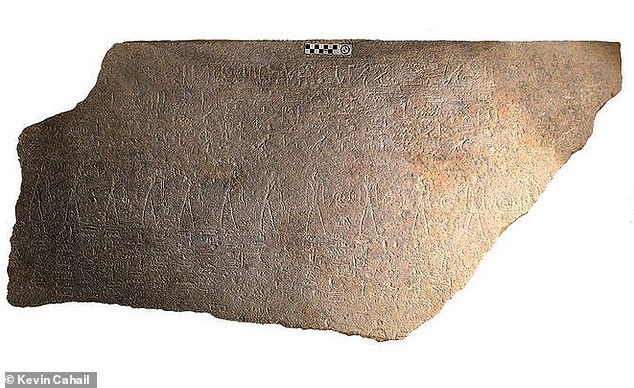The long-lost sarcophagus that belonged to ancient Egypt’s most powerful pharaoh has been found more than 3,000 years after his death.
Archaeologists re-examined a mysterious granite burial found beneath the floor of a religious center in east-central Egypt and discovered it belonged to Ramses II.
Nicknamed Ramses the Great, during his reign from 1279 to 1213 BC. Colossal statues and buildings were erected in what was considered the last peak of Egypt’s imperial power.
The remains of a high priest were originally found in the sarcophagus, but that new discovery suggests that he removed the pharaoh’s mummy and coffin to reuse the burial.
Archaeologists re-examined a mysterious granite burial found beneath the floor of a religious center in east-central Egypt and discovered it belonged to Ramses II.
Egyptologist Frédéric Payraudeau, a professor and researcher at Sorbonne University in France, made the discovery this month after taking another look at a fragment of granite discovered at Abydos in 2009.
He determined that the stone, which measured five feet long and three inches thick, featured an overlooked engraving that read “from Ramses II himself,” according to one translation. statement of the National Center for Scientific Research of France.
‘When I read these results, doubts invaded me. I asked my American colleague if he could re-study the file, which he accepted given the complexity of the case,” Payraudeau said.
‘My colleagues believed that the cartouche preceded by the word ‘king’ designated the high priest Menkheperre, who ruled southern Egypt around 1000 BC
“However, this cartouche actually dates back to the earlier engraving and therefore designates its first owner.”
He went on to explain that the sarcophagus also contained engravings from the Book of Doors, an initiation story reserved for kings during the time of Ramses.
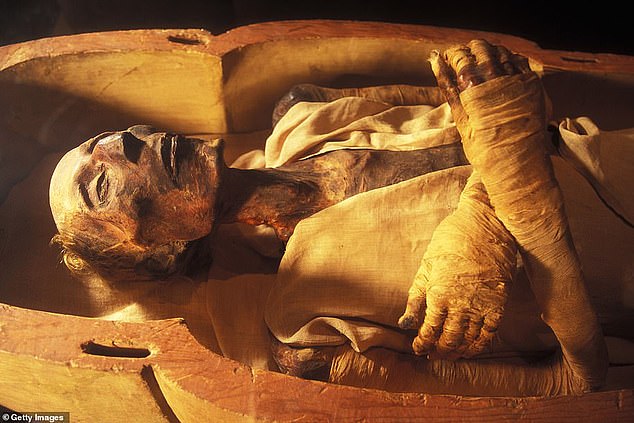
The mummy of Ramses II was first discovered in 1818
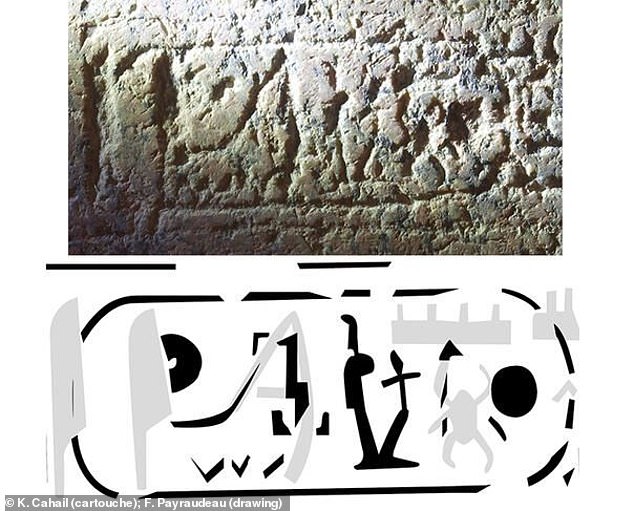
The overlooked engravings revealed the coronation name of Ramses II, but it was masked by the condition of the stone. The researchers created a drawing of the original engravings.
“The royal cartouche contains the coronation name of Ramses II, which is specific to him, but was masked by the condition of the stone and by a second engraving, added during reuse,” Payraudeau said.
Archaeologists have long known that Ramses II was buried in a gold coffin, stolen in ancient times, and transferred to an alabaster sarcophagus that was later destroyed.
The thousands of pieces were placed inside the large granite sarcophagus that was stolen 200 years later by Menkheperrê for reuse.
“This discovery is new proof that at that time the Valley of the Kings was subject not only to looting but also to the reuse of funerary objects by later sovereigns,” said Payraudeau.
Ramses II was the most powerful and famous ruler of ancient Egypt.
Known to his successors as the “Great Ancestor”, he led several military expeditions and expanded the Egyptian Empire from Syria in the east to Nubia in the south.
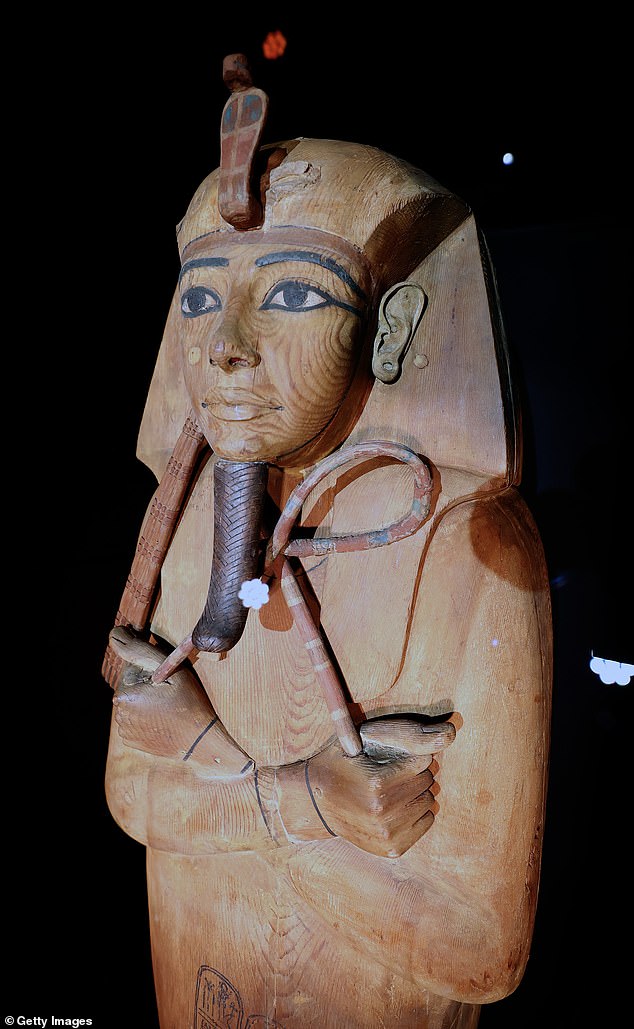
Nicknamed Ramses the Great, during his reign from 1279 to 1213 BC. Colossal statues and buildings were erected in what is considered the last peak of Egypt’s imperial power.
He was the third pharaoh of the 19th Dynasty of Egypt.
Scientists from Egypt and England recreated the face of Ramses II in 2022 using a 3D model of his skull to reconstruct his features.
They then reversed the aging process, turning back the clock almost half a century to reveal his face at the height of his powers.
The result is the first “scientific facial reconstruction” of the pharaoh based on a CT scan of his skull.
Sahar Saleem of Cairo University, who created the 3D model of the skull, said the result had revealed a “very attractive” ruler.
“My imagination about the face of Ramses II was influenced by the face of his mummy,” Saleem said.
‘However, facial reconstruction helped give the mummy a living face.
“I believe that the reconstructed face is that of a very handsome Egyptian with facial features characteristic of Ramses II: a pronounced nose and strong jaw.”
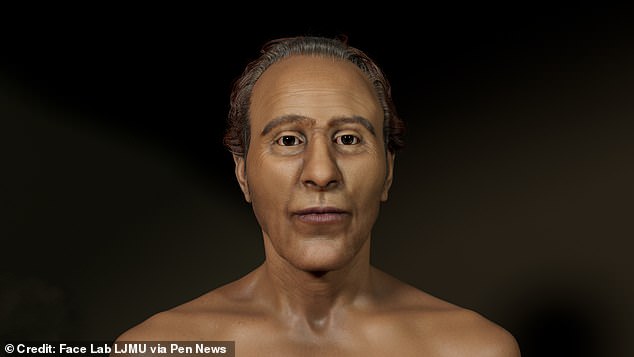
Scientists from Egypt and England recreated the face of Ramses II in 2022 using a 3D model of his skull to reconstruct his features
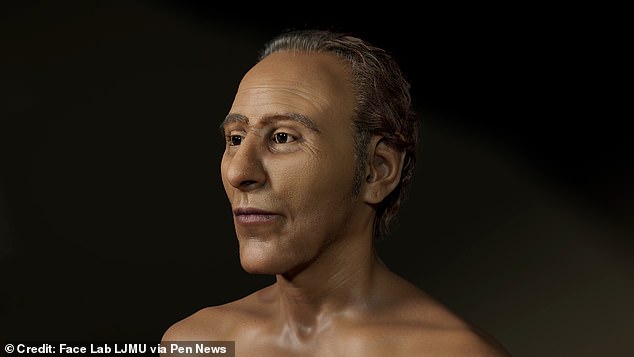
Sahar Saleem of Cairo University, who created the 3D model of the skull, said the result had revealed a “very attractive” ruler.
Caroline Wilkinson, director of the Face Lab at Liverpool John Moores University, which reconstructed the pharaoh’s face, described the scientific process.
She said: ‘We take the computed tomography (CT) model of the skull, which gives us the 3D shape of the skull which we can feed into our computer system.
‘Then we have a pre-modeled facial anatomy database that we import and then modify to fit the skull.
“We’re basically building the face, from the surface of the skull to the surface of the face, through the muscle structure and the fat layers, and finally the skin layer.”
He continued: ‘We all have more or less the same muscles from the same origins with the same insertions.
“Because each of us has slightly different proportions and shapes in our skull, you will get slightly different shapes and proportions for the muscles, and that will directly influence the shape of the face.”
The project is the second of its kind recently overseen by Sahar, following a scientific reconstruction of Tut’s face by royal sculptor Christian Corbet.
For the professor, the process helps restore the mummies’ humanity.
She said: “Putting a face on the king’s mummy will humanise him and create a bond, as well as restoring his legacy.”
‘King Ramses II was a great warrior who ruled Egypt for 66 years and initiated the world’s first treaty.


